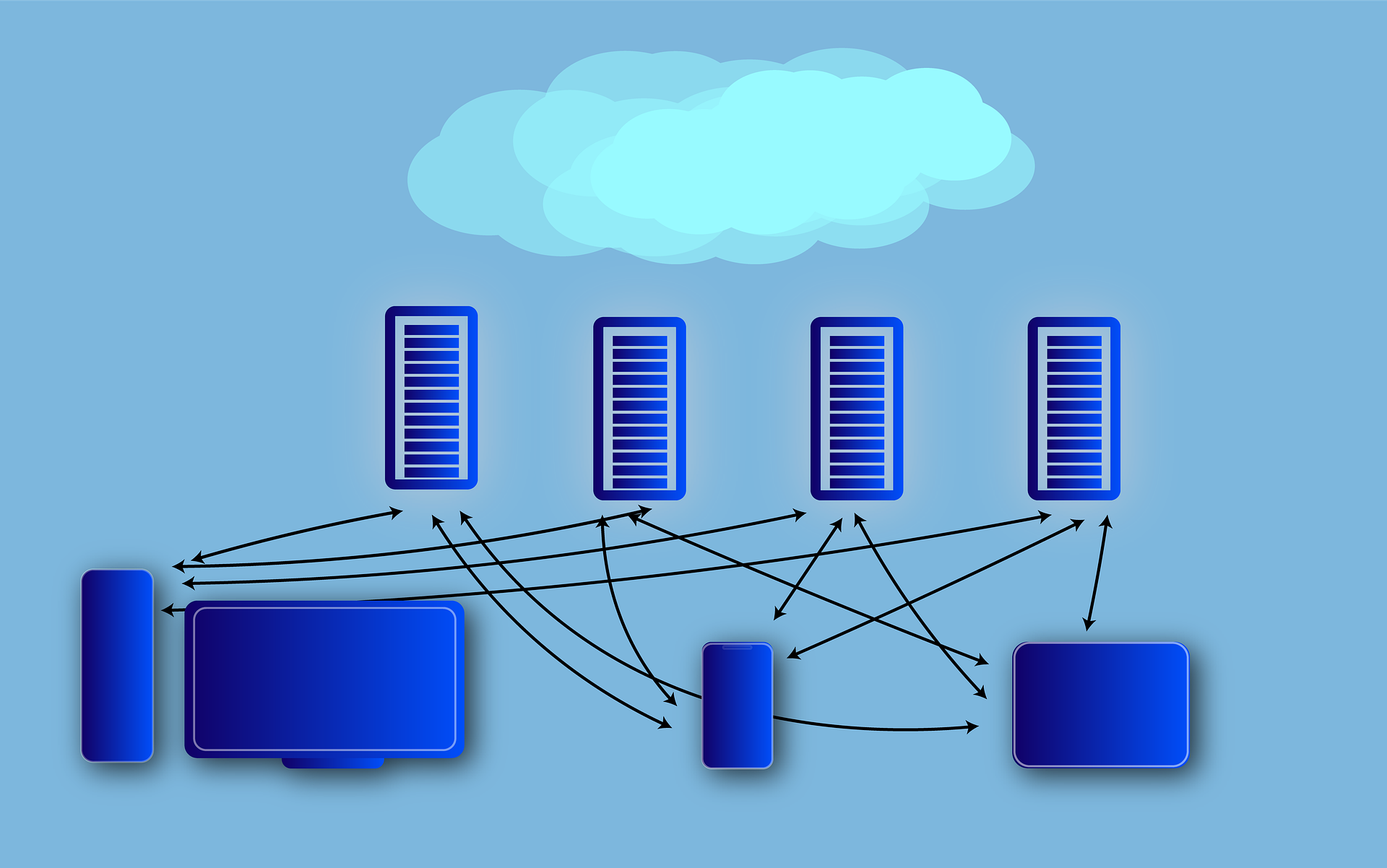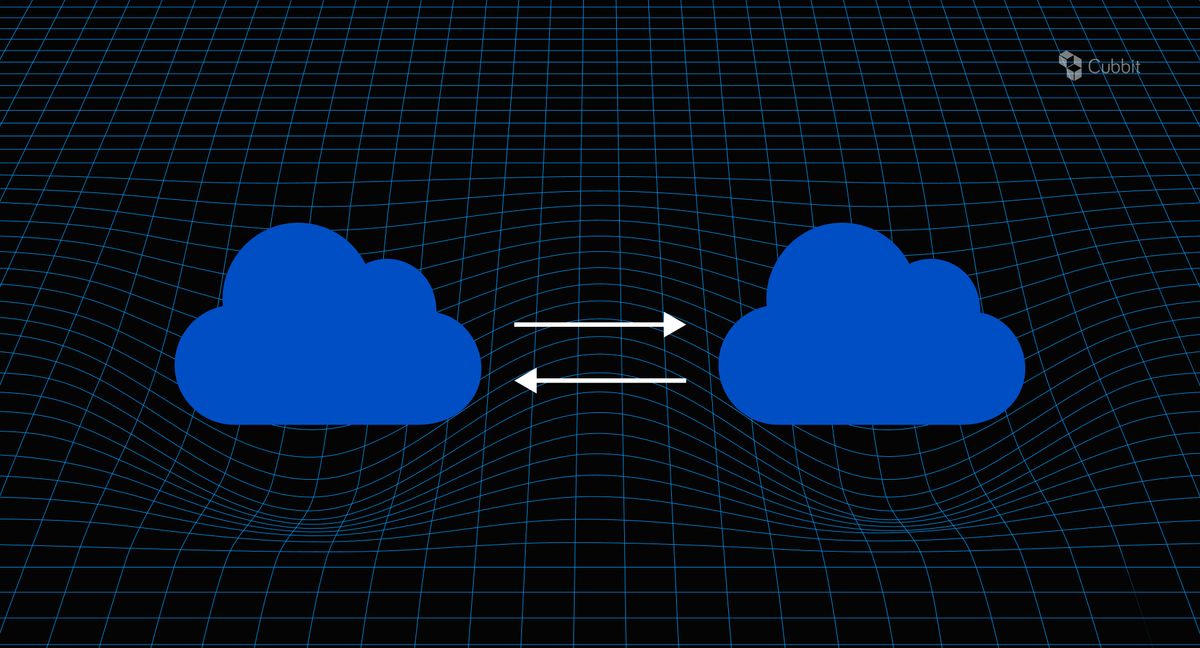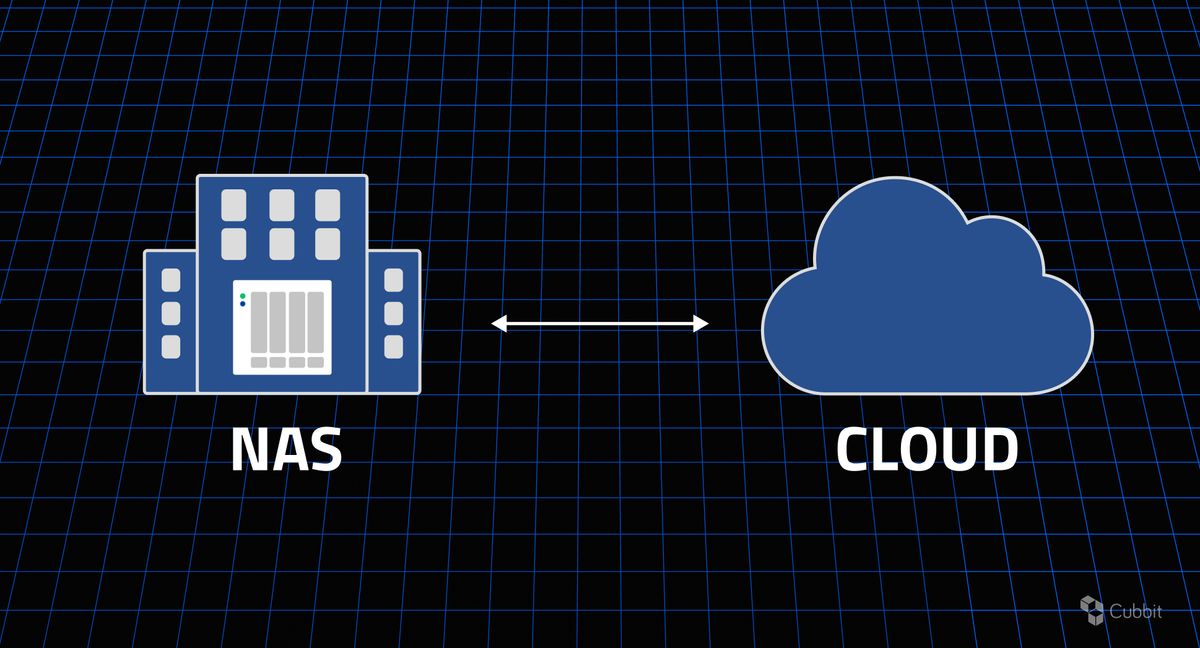More and more companies are using multiple cloud providers. On the other hand, firms that use multicloud solutions consider data security and protection as their biggest challenge.
But what is multicloud? And what are its benefits?
In this article, you’ll find:
- What a multicloud is
- Why multicloud adoption is growing
- Hybrid cloud vs multicloud — what’s the difference?
- 6 benefits of multicloud
- How to implement multicloud: examples and best practices
- 4 multicloud security challenges
What is multicloud?
In a nutshell, multicloud is an IT environment that utilizes two or more cloud services from different providers in a single setting. In simpler terms, multicloud distributes workloads and applications across multiple cloud providers rather than relying on a single cloud environment. This approach allows organizations to choose the best services and features from various cloud providers based on their specific requirements rather than being locked into a single vendor.
Related reading: Top MinIO and Ceph S3 alternatives in 2025 (European gems inside)
However, adopting a multicloud strategy can be challenging for organizations. It requires navigating complex vendor relationships, managing multiple data management tools and user interfaces, and ensuring interoperability and data portability across different cloud platforms. It's crucial for IT managers, CTOs, and developers to carefully evaluate their requirements and choose the right multicloud strategy and tools for their organization to realize the full benefits of this approach.
Now that we've explained what multicloud is, let's see why adopting a multicloud strategy is crucial for your business.
Why multicloud adoption is growing

Multicloud has become increasingly relevant and essential in 2025 due to the growing digital transformation trend and the need for organizations to modernize their IT infrastructure. With the rise of cloud computing, there has been a proliferation of cloud providers, each offering its own features and services. Multicloud allows organizations to take advantage of this diversity and choose the best services from multiple cloud providers based on their needs.
The critical benefit of multicloud is its ability to offer greater flexibility, agility, and cost-effectiveness for organizations. By leveraging multiple cloud providers, organizations can avoid vendor lock-in, negotiate and manage costs more effectively, and minimize the risk of downtime or data loss. Multicloud environments can also enable organizations to leverage best-of-breed technologies from different providers, scale up or down based on demand, and streamline compliance with regulatory requirements.
Multicloud examples are infinite and depend on an organization's needs. For example, a composite multicloud architecture for software-as-a-service (SaaS) applications that work well together will be hosted and served by two or more cloud service providers. A redundant multicloud architecture, on the other hand, involves hosting two or more instances of the same application by different providers for failover and application performance management purposes.
Hybrid cloud vs multicloud — what’s the difference?
Hybrid cloud and multicloud are popular cloud computing models with unique advantages and disadvantages. Understanding the differences between these two models is crucial for IT managers, CTOs, and developers to choose the suitable model for their organization's needs. This section will provide a technical and thorough comparison of hybrid cloud vs multicloud.
Multicloud computing uses multiple public clouds from different service providers to exploit each provider's attributes. The key characteristic of a multicloud model is that it incorporates two or more public clouds from different providers. This model offers extremely flexible functioning by spreading services and resources across providers.
On the other hand, hybrid clouds use a combination of public and private clouds. Hybrid clouds can also include on-premise cloud infrastructure. A company may integrate on-premise infrastructure with a public cloud for various reasons. For instance, the company may have a legacy infrastructure they want to avoid migrating to the cloud. Also, some businesses, like banks and credit card operators, prefer to implement specific hardware, databases, or data centers within their companies to maintain control of specific resources.
Related reading: What is a hybrid cloud model? Examples and benefits in 2025
The main difference between multicloud and hybrid cloud is that multicloud leverages multiple public cloud providers to enhance resiliency, performance, scalability, and compliance. In contrast, a hybrid cloud leverages an organization's existing infrastructure and a public cloud provider to ensure customized compliance with security standards (e.g., 321 backup rule), government regulations (e.g., GDPR), and company policies (e.g., risk diversification).
6 benefits of multicloud
Let’s now dive deeper and consider the 6 main benefits of multicloud.
#1 Cost savings
- Businesses can choose the most cost-effective solutions for their IT infrastructure by using multiple cloud providers.
- Cloud providers offer different pricing models, so companies can choose the most cost-efficient solutions.
- With a multicloud approach, businesses can take full advantage of flexible pricing models and avoid vendor lock-in (together with hefty egress fees).
#2 Security and infrastructure diversification
- By spreading data, applications, and workloads across multiple clouds, businesses are diversified and better protected from unexpected events or disasters — eliminating the single point of failure.
- Deploying different cloud services from various vendors also allows businesses to take advantage of each vendor’s unique security features, such as S3 Object Locking for ransomware data recovery, access protocols, and encryption methods, which will help mitigate risk even further.
#3 Avoidance of vendor lock-in
- Adopting a multicloud approach enables businesses to avoid being locked into a single cloud provider, which can limit their flexibility and ability to negotiate prices.
- Vendor lock-in can also create issues around data portability and migration, making it difficult for businesses to switch providers if necessary or move data and workloads from one cloud to the other.
- By leveraging multiple cloud providers, businesses can retain greater flexibility and control over their data and applications, allowing them to take advantage of the best solutions for their particular use case.
#4 Regulatory compliance
- Multicloud enables businesses to adhere to regulatory compliance requirements by distributing workloads and data across multiple cloud providers.
- Compliance can vary from region to region. Different cloud providers may have specific certifications, allowing businesses to select the most appropriate provider for each workload and ensure compliance with regulations and data sovereignty.
- By having a multicloud approach, businesses can avoid the risk of non-compliance and potential legal repercussions.
#5 Scalability
- Multicloud allows businesses to scale their IT infrastructure horizontally, adding resources on demand across multiple cloud providers and distributing data among the most cost-efficient solutions for specific needs.
#6 Best-of-Breed Technology Adoption
- This approach enables businesses to leverage the strengths of different providers, such as Content Delivery Networks, machine learning, analytics, or security services, to deliver the most effective solution.
- Using a multicloud approach enables businesses to take advantage of the latest innovations from each provider, ensuring that they remain competitive and at the forefront of their industry.
You now know what a multicloud is and its benefits. Let’s now discover how to implement it in the best possible way.
How to implement multicloud: examples and best practices
Businesses can adopt several multicloud strategies depending on their specific needs and requirements. Multicloud examples include Cloudification (where cloud applications are hosted on-premises to improve performance and avoid lock-in) and MultiCloud Relocation.
While you can dive deeper into multicloud strategies, it's also essential to consider the different types of multicloud deployment models. A proper deployment model can provide enhanced security and performance.
In particular, multicloud deployments fall into composite and redundant deployment models:
- Composite deployment model: workloads are spread across multiple providers, depending on cost-efficiency and specific capabilities. Examples of this deployment model include Tiered Hybrid Pattern and Cloud Analytics Pattern.
- Redundant deployment model: while the previous model distributes data across providers, this one increases security by making copies of the same workload on multiple systems to avoid failures. Examples of this model include Active-Active and Public-Private.
Best practices for multicloud implementation
Here are some insights for IT managers, CTOs, and developers on implementing multicloud:
#1 Set a standard across environments
When adopting multiple services and systems, the challenge is to have a uniform approach and SLAs across environments.
This can be done by setting a protocol standard for storage, security, and user monitoring/tagging. And remember to create a centralized code repository.
Also, it's essential to analyze workloads and know the most efficient environment for them. A best practice here is to map workloads to understand when you don't need them or if you should move them to another domain.
Finally, you should keep an overview of everything to anticipate downtime and security issues. You can check different cloud monitoring tools here to consolidate your security system.
Regarding multicloud security, preparing a proper response plan, adopting end-to-end encryption, and following all the best practices is crucial.
#2 Containers are your way to a fully-integrated environment
Moving from one environment to the other is a significant challenge of multicloud. Containers make your workloads portable.
The benefit of this is that you can move apps and data from one cloud to another without incurring performance roller-coasting. Also, it will be easier to make services available again (i.e., in case of downtime) by moving them to another platform.
To achieve this, you should educate your employees on best practices, adopt a container repository, and use the proper service (e.g., Kubernetes for MultiCloud portability).
#3 Be cost-efficient
When using multiple cloud services, getting lost among different, non-transparent costs is easy. On one side, you should follow the best practices. On the other, a tool enabling a unified view can help.
In particular, a suggested best practice is building a self-service, unified consumption system so developers can operate and adopt environments and platforms on demand. On top of that, this practice will also help cost optimization since it will signal the presence of a lower-cost service and the actual budget available.
Cost-efficiency doesn't only mean spending less money. Manual processes take out a lot of time and focus. Therefore it's also imperative to automate processes.
#4 Adopt a hybrid multicloud strategy
When implementing a multicloud strategy, you should avoid religiously sticking to it. Instead, consider adopting different IT models from the edge to on-premise and the cloud.
This way, you can have high performance and protection on mission-critical data and offload all the rest offsite for risk diversification and cost-optimization.
4 key multicloud security challenges
As businesses continue their digital transformation journey, they increasingly adopt multicloud environments to support their growing flexibility, scalability, and cost-efficiency needs. Multicloud environments enable organizations to deploy workloads across different cloud providers, which allows them to take advantage of unique services offered by each provider and avoid vendor lock-in. However, multicloud environments also introduce new security challenges that IT managers, CTOs, and developers must be aware of and address. This section will discuss 4 critical multicloud security challenges and provide best practices for addressing them.
#1 Fragmented security solutions
In a multicloud environment, organizations often use various vendor security tools to manage different cloud platforms, leading to a fragmented security solution. This can create gaps in security coverage (e.g., increased attack surface), complexities and reduce visibility into threats. To address this challenge, organizations should adopt an integrated approach to security that leverages automation and centralized management.
Best practices:
- Implement a security platform that can provide a unified view of security across all cloud platforms.
- Automate security tasks.
- Provide real-time threat intelligence.
#2 Shared responsibility
Cloud providers follow a shared responsibility model where they are responsible for securing the infrastructure, while organizations are responsible for ensuring their workloads. This model can lead to confusion about who is responsible for what, resulting in security gaps. Organizations should clearly define their security responsibilities to address this challenge and ensure their cloud providers meet their security obligations.
Best practice: Develop a comprehensive security strategy that includes security controls, compliance requirements, and risk management. Establish clear security responsibilities with your cloud providers and monitor their compliance regularly.
#3 Compliance
In 2025, maintaining compliance is critical for businesses that want to avoid hefty fines and losing important customers.
When adopting multiple services from different countries and legislations, checking everything is crucial to avoid nasty surprises.
Best practice:
- Regularly audit your services.
- Define a perimeter through data localization.
- Run apps under different tenants.
#4 Increased attack surface
While diversifying through multiple cloud services it's good from a disaster recovery perspective, on the other hand, this process makes the system more likely to be a target of cyber attacks.
Best practice: follow the digital hygiene best practices, in particular, keep your systems updated, train your employees, avoid IT shadowing, set access rights properly, and more.
Conclusion
In this article, we've considered what a multicloud is and why this strategy is growing in popularity across IT leaders.
While a hybrid cloud model leverages an organization's local infrastructure and a public cloud, a multicloud strategy uses multiple cloud providers to optimize workloads regarding costs, security, performance, scalability, and compliance.
The benefits of multicloud are many, but also challenges. First, IT experts should follow the best practices for implementing it, like setting a standard across environments and leveraging containers (e.g., Kubernetes). Then, they should focus on the 4 critical multicloud security challenges.
Cubbit offers geo-distributed cloud object storage that's secure, S3 compatible, and immutable.
Every data stored on Cubbit is encrypted, split into redundant chunks, and distributed across a global, peer-to-peer network — safe from ransomware, downtime, and data breaches.
Thanks to S3 compatibility, you can move large quantities of data from one cloud (e.g., AWS, Google, Azure) to Cubbit with just one line of code.
This allows you to bid for, get important clients, and avoid fines by proving that you've done everything you can in terms of durability (99.999999999%) and compliance (GDPR, ISO, CCPA, AGID) in case of a data breach.
You can activate a cardless, free trial of Cubbit object storage here.
And if you need more customized support or advice on storage and cybersecurity, don't hesitate to contact Cubbit's team of experts.








